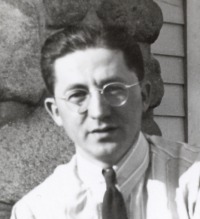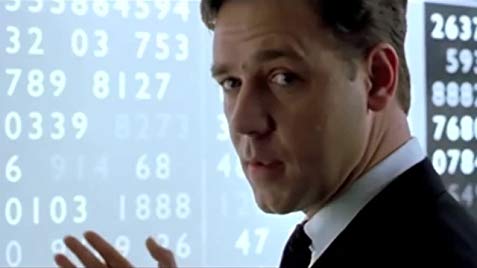Imagine a story that goes like this:
There are two members of a criminal gang are arrested and imprisoned.
Each prisoner is in solitary confinement with no means of communicating with the other.
The prosecutors lack sufficient evidence to convict the pair on the principal charge, but they have enough to convict both on a lesser charge.
Simultaneously, the prosecutors offer each prisoner a bargain.
Each prisoner is given the opportunity either to betray the other by testifying that the other committed the crime, or to cooperate with the other by remaining silent.
The possible outcomes are:
- If A and B each betray the other, each of them serves two years in prison
- If A betrays B but B remains silent, A will be set free and B will serve three years in prison (and vice versa)
- If A and B both remain silent, both of them will serve only one year in prison (on the lesser charge).
If we look solely at the best possible outcome, then keeping silent would be the best choice for both parties.
Yet, it can be shown that betraying each other (and thereby earning themselves two years of jail each) is the most rational choice instead.

Nash Equilibrium and Game Theory
The above scenario was formalised in such story-form by a mathematician Albert Tucker, although Merrill Flood and Melvin Dresher were credited with coming up with the associated theoretical concept earlier.
And to put face to name, these were the chaps in respective order:



So why did the prisoners choose what appears to be a sub-optimal strategy?
To understand, we put ourselves in the shoes of Prisoner A and reason as follows:
- If Prisoner B keeps silent, Prisoner A should betray rather than keep silent because he will be set free.
- If Prisoner B betrays, Prisoner A should still betray rather than keep silent too, because keep silent will yield a longer jail-term of three years.
Interestingly, when broken down as such, we can immediately see that the optimal strategy from Prisoner A’s point of view (and vice versa), is to betray the other prisoner, even if it doesn’t lead to the best possible outcome.
This outcome is known academically as the Nash Equilibrium, which is said to occur in such a “game” scenario, when no matter the strategy played by the other player, the optimal strategy of the player remains unchanged.
The Nash Equilibrium is named after the famous Mathematician, John Nash, whose life was portrayed in the famous movie, A Beautiful Mind.
Again, to put face to name, here is John Nash:

Ok I lied. That was Russell Crowe acting as John Nash in A Beautiful Mind. Here is the actual person:

A Nash Equilibrium with sub-optimal outcome for each player is a unique outcome of a type of “game” that arises from the following circumstances:
- The players are non-cooperative.
- Each player is aware of the equilibrium strategies of the other.
- The payoff of each strategy favours non-cooperative actions from each party.
The Prisoner’s Dilemma and the Nash Equilibrium are in turn, a sub-set of a general field in Mathematics and Social Sciences (including Economics), known as game theory.
Expounding great details on game theory is not the aim of this article as it is a large and ever-expanding field that seeks to explain various outcomes in interactions between agents.
So if you are keen to find out more about game theory, Wikipedia does a more than decent job in explaining.
US-China Trade War – Will it end soon?
Despite most observers noting that the US-China trade war has been a bruising affair for both parties, and that ending the trade war would benefit both countries, they agree too that the trade war is unlikely to end any time soon.
There are of course many reasons and driving forces behind the course of actions for both belligerents, but the Prisoner’s Dilemma can be utilised for a simple explanation why, without getting into the nuances of the various arguments.
The trade war exhibits such characteristics that mirror that of the Prisoner’s Dilemma:
- China and USA are non-cooperative agents, pursuing their individual national interests.
- While both countries are unlikely to have a complete grasp of each other’s national psyche, it is assumed that they are at least aware of each other’s motivations and can reasonably predict the strategies and responses employed.
Both countries can choose to either add (more) tariffs on the other’s imports, or reduce (remove) the tariffs.
The possible outcomes to their actions are as follows:
- If USA and China both drop tariffs, their export industries and consumers’ import welfare will improve.
- If USA (China) drops the tariffs and China (USA) increases tariffs instead, USA (China) will suffer from increased competition to domestic industries and lose political capital.
- If both countries increase their tariffs against each other, pain is inflicted on their respective export industries and importing consumers, but at least their political capitals would be preserved having stood up against each other.
So in the very simplified context of the above, what will USA and China do?
Taking the perspective of USA:
- If China drops the tariffs, the USA should increase tariffs instead, because it will score a huge economic and political coup, inflicting damage on China whilst further protecting its export industries.
- If China increases tariffs, the USA should also increase tariffs, because not doing so will cost political capital in “failing to stand up to foreign aggression”.
As we can see, this results in a Nash Equilibrium with the outcome suggesting tit-for-tat tariffs are rational responses from either party, never mind the detrimental effects to their economies, or the world’s for the matter.
Taken simply, both countries are unlikely to back down from their current belligerent stance, even at the expense of their industries and consumers.

This is of course, a grossly simplified exercise that does little justice to the complexities in the relationship between USA and China, including the fact that the trade war is just one of many manifestations of the ongoing interactions between both countries.
But the Prisoner’s Dilemma, and game theory in general, does offer a structured framework to shed light on relations between the different agents, and offer useful explanations on behaviours in interactions.
Useful case studies of the Prisoner’s Dilemma have included international arms races, and price wars between suppliers.
Can you think of any other examples of the Prisoner’s Dilemma? If you can, share them with us in the comments section below!
Lend your support!
I hope that you have enjoyed reading this article of mine. I am giving my time to sharing my knowledge and every bit of support means a lot to me! Do drop me a comment or share this article on social media with your friends.
To find out more about my services as a JC Economics tutor, visit my website here.


A motivating discussion is definitely worth comment.I do think that you need to publish more about this topic, it might not be a taboo matter but generally people don’t discuss suchissues. To the next! Many thanks!!
LikeLike
Thank you for sharing your thoughts. I really appreciate your effortsand I am waiting for your next post thank you once again.
LikeLike